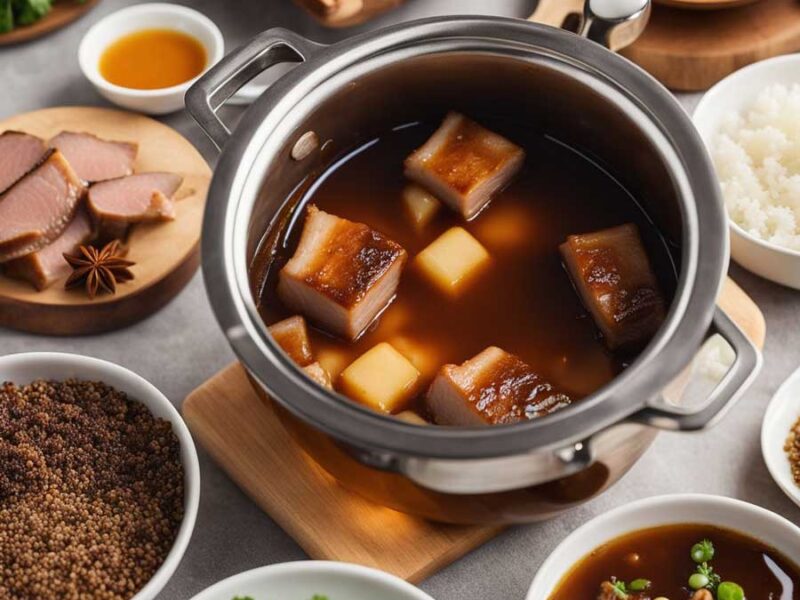If the future of food consists of Daniel Boulud’s Poulet aux Morilles (chicken with morels), Masaharu Morimoto’s Spicy Cold Ramen, Markus Glocker’s Octopus Pastrami, then the future is looking delicious.
On Monday, June 8, nearly 50 of the world’s top chefs gathered at Rockefeller Center for the 30th Annual Chef’s Tribute to Citymeals-on-Wheels, presenting their takes on the food trends of tomorrow.
Chefs’ Class Photo at Cheftopia 2015. (Jan Jekielek/Epoch Times)
So what exactly does the future of food hold?
“The future of food? It’s right here in this room,” said chef Charlie Palmer.
Indeed it was. We collected chefs’ thoughts and insights from interviews at the event and from the Citymeals-on-Wheels Cheftopia journal.
Chefs touched on the quality of ingredients, going back to the tradition of using old techniques and flavor combinations in a more modern way. And, of course, the farm-to-table movement.
Burrata, beets polenta and winter truffle on display at Cheftopia, from Boulevard Restaurant, San Francisco. (Jan Jekielek/Epoch Times)
On Quality Ingredients
Daniel Boulud (Café Boulud): “The future of food is better ingredients. Trustability from where they’re from, where they’re raised, and if they’re ethically raised.” Why? “Because that’s what I was raised on.”
Charlie Palmer (Aureole): “What I preach to my chefs as the number one constant is ingredients. Ingredient-driven menus. Not fads.”
Bill Telepan (Telepan): “Chefs can set an example by committing to products that are fresh, raised sustainability, and support the future growth of our nation’s children.”
Gregory Brainin (Jean-Georges): “It’ll be more about product, less about chef … like this fermented green chili risotto with only four ingredients. It couldn’t be more simple and natural.”
Fermented Green Chili Risotto: vegetable bouquet and wild sprouts from Jean-Georges. (Jan Jekielek/Epoch Times)
Revisiting What Is Traditional
Markus Glocker (Bâtard): “It’s slightly going back to the traditional way of eating and dining,” Glocker said in terms of the use of old techniques. While he believes that “tasting menus are always going to be relevant,” people are starting to take charge of what they eat, as “they want the freedom to be able to pick and choose.”
Bobby Flay (Gato): “What’s old is new again!”
Scott Conant (Scarpetta): “I’m getting too old, I don’t feel like I’m going to see the future,” said Conant, laughing. He believes that “vegetables will be front and center” since proteins have become “outrageously expensive.”
Larry Forgione (The Conservatory for American Food Studies) The next big food trend will be “getting back to past values in everything food related,” as Forgione noted in the Cheftopia journal.
Organic Heirloom Vegetables Ceviche: candy cane beets, rainbow carrots, mango, avocado, watermelon radish, and carrot-lime emulsion from Gotham Bar and Grill. (Jan Jekielek/Epoch Times)
Farm-to-Table
Aaron Bludorn (Café Boulud) “The farm-to-table movement has been an industry wake-up call … we are accountable as chefs to buy better products.”
Charlie Palmer (Aureole) “I hate the term because it’s misused and overused, but it’s what we should do. Real farm-to-table is food grown here. … Lots of people are buying flown-in produce from a farm and calling it ‘farm-to-table.’”
Larry Forgione (The Conservatory for American Food Studies) The most memorable food trend in the past 30 years, as written in the Cheftopia journal, is “the continuation and growth of the farm-to-table movement starting from the late ’70s.”
Foie Gras Mousseline: bing cherries, almond brioche from Aureole. (Jan Jekielek/Epoch Times)
The Next Big Food Trend
Nobu Matsuhisa (Nobu): “White truffle. Especially white truffle from the end of September to November/December.”
Octavio Becerra (STATE Grill and Bar): “Chef-driven street food.”
Joachim Splichal (Patina Restaurant): “Food in tubes.”
Stephan Pyles (Stephan Pyles, Dallas): “Peruvian cuisine has yet to see its full heyday.”
Michael Gabriel (The Sea Grill): “Unprocessed fast foods.”
Antonio Prontelli (Rock Center Café): “Using secondary cuts of meat as well as sustainability.”
Bill Telepan (Telepan): “Pierogies!”
Richard Diamonte (Metropolitan Opera House & The Grand Tier Restaurant): “More casual restaurants from fine dining chefs.”
Rob Newton (Nightingale 9): “Vegetarianism.”
Marc Forgione (Restaurant Marc Forgione, American Cut, Khe-yo): “People going out of their comfort zone to try and taste different things.”
Eli Kulp (Fork Restaurant | High Street on Hudson, Philadelphia): “A movement to fermentation for flavor and health.”
Ari Taymor (Alma, Los Angeles): “I’m not interested in trends.”
Masaharu Morimoto (Morimoto): “I don’t care about the future of food. I care most about today.”

